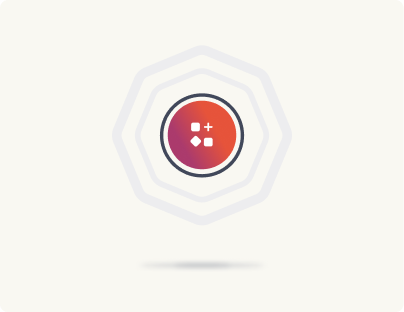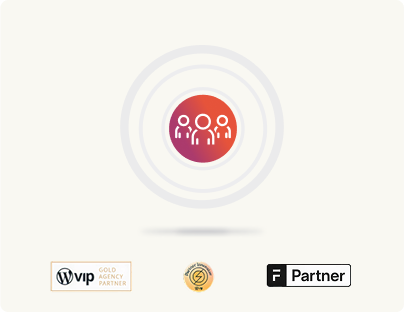Adding a Customer Data Platform (CDP) to WordPress
When enterprises evaluate Customer Data Platforms in a Digital Experience Platform (DXP) environment, they typically have three options:
- A DXP with a native CDP – e.g., Sitecore + Sitecore CDP, Oracle + Oracle Unity, or Acquia + Acquia CDP.
- A DXP that provides a data platform with limited CDP-like features and middleware for external CDPs – e.g., Optimizely Data Platform (ODP) for customer insights and Optimizely Audience Sync for integrating with third-party CDPs.
- A DXP that allows full CDP flexibility – e.g., WordPress integrating with Segment, Lytics, Amplitude, or any enterprise CDP.
Each approach has trade-offs in terms of integration, flexibility, cost, vendor lock-in, and scalability. Here’s breaking down the strengths and challenges of each model—and why WordPress offers the best solution.
The built-in CDP approach: DXP-owned, but restrictive
In this model, your DXP comes with a native CDP that seamlessly integrates with its personalization engine, analytics, marketing automation, and content management tools. Everything is designed to work together under a single ecosystem, offering a unified approach to customer data management.
Advantages of built-in CDPs
- Tight integration – Since the CDP is built into the DXP, it naturally aligns with its personalization, content delivery, and automation features, reducing the need for additional integration work.
- Single-vendor support – You only deal with one provider for both the DXP and CDP, simplifying troubleshooting, licensing, and updates (not necessarily, but ideally).
- Pre-configured data models – The CDP is designed to match the DXP’s data architecture, making it easier to set up without extensive customization.
Challenges of built-in CDPs
- Vendor lock-in – You get tied to the DXP’s ecosystem, making it difficult to switch to another platform without losing data, disrupting workflows, and undergoing costly migrations.
- Higher costs – Many DXPs bundle their CDP with premium pricing tiers, leading to significantly higher long-term expenses compared to choosing an independent CDP.
- Limited flexibility – You must rely on the DXP’s CDP—even if a better alternative exists. If the built-in CDP lacks specific features or advanced data segmentation, you have no choice but to work within its constraints.
- Scalability concerns – Some built-in CDPs struggle to handle real-time data collection and processing at an enterprise scale, particularly when dealing with omnichannel data streams.
For companies fully committed to a single-vendor tech stack, a built-in CDP may seem like a convenient choice. However, as marketing, analytics, and customer experience needs evolve, enterprises often outgrow the limitations of a proprietary CDP.
If they later decide to adopt best-in-class tools for marketing automation, AI-driven analytics, or personalization, they may find themselves constrained by the DXP’s closed ecosystem.
This makes it essential for organizations to consider whether long-term agility, cost control, and best-of-breed integrations outweigh the initial convenience of a built-in CDP.
The middleware approach: More flexibility, but still tied to the DXP
With this model, your DXP doesn’t force you to use a built-in CDP but instead offers a middleware layer that acts as a bridge between the DXP and external CDPs (or even its own “general” data platform). This approach provides more flexibility than a fully integrated CDP, allowing you to bring in third-party solutions for customer data management while still maintaining a connection to the DXP’s ecosystem.
Advantages of the middleware approach
- More CDP choices – Here, you aren’t completely locked into the DXP’s proprietary CDP and can integrate with external options, such as Segment, Amplitude, Tealium, etc.
- Some flexibility in selecting external tools – You can also choose from a range of marketing automation, analytics, and personalization solutions that may offer more advanced capabilities than your DXP’s native tools.
- Better interoperability with other platforms – Middleware solutions often provide APIs and connectors that allow for smoother data exchanges between the DXP, external CDPs, and third-party applications.
Challenges of the middleware approach
- Still vendor-dependent – While middleware allows for external integrations, it is typically designed to work best within the DXP’s ecosystem. If an enterprise wants to use a tool that is not officially supported, custom development may be required.
- Limited customization – The middleware may impose restrictions on how data flows between platforms or require businesses to conform to its predefined data structure, limiting full control over customer data.
- Potential extra costs – Enterprises often need to pay for both the middleware and the external CDP, on top of DXP licensing fees. This can make costs unpredictable, especially if pricing is based on data volume, API calls, or the number of integrations.
For organizations that want some flexibility without fully leaving the DXP’s ecosystem, a middleware approach can be a middle ground. However, it is often a compromise rather than true independence. While businesses can integrate with external CDPs, they are still bound to the DXP’s architecture, pricing model, and performance limitations.
As data needs grow and enterprises look for greater control, cost efficiency, and agility, they may find that middleware solutions do not provide the long-term scalability and freedom that an independent, best-of-breed approach offers.
The best-of-breed approach: Full freedom (with a DXP like WordPress)
In this approach, your DXP is decoupled from the CDP, allowing you to choose the best customer data platform that suits your needs, rather than being limited to a built-in or middleware solution. This freedom enables you to integrate the most suitable CDP with your DXP, offering unparalleled flexibility and scalability.
Advantages of the best-of-breed approach
- Total freedom to choose any CDP – Enterprises can select from a wide range of industry-leading CDPs or even custom-built solutions, based on their unique requirements. This allows for greater control over data management and customer insights.
- Lower costs – Instead of paying for bundled features that may go unused, businesses can choose and pay only for the tools they need. With this modular approach, costs are better aligned with actual usage, reducing unnecessary expenses associated with premium DXPs.
- Full data ownership – WordPress allows enterprises to store customer data on their own infrastructure, ensuring full compliance with GDPR, CCPA, HIPAA, and other regulations. There are no third-party data processors involved, giving businesses complete control over their data. Since you can choose your own CDP, you can choose one that offers similar data policies.
- Easier future migrations – With a decoupled DXP and CDP setup, enterprises can switch CDPs without having to replatform their entire DXP. This future-proofing offers greater flexibility for long-term strategy, allowing businesses to evolve their tech stack without expensive rework.
- Real-time integrations – The API-driven architecture of WordPress allows seamless integrations with AI-driven personalization tools, advanced analytics platforms, and other enterprise systems, enabling real-time data syncing and enhancing customer experiences with dynamic, targeted content delivery.
Challenges of the best-of-breed approach
- Requires more upfront planning for integrations – Since the DXP and CDP are decoupled, more integration work is required upfront to ensure smooth data flow between systems. This might require custom development or additional resources to establish robust connections.
- Not a plug-and-play solution – Unlike fully integrated DXP-CDP systems, the best-of-breed approach doesn’t offer the same “out-of-the-box” functionality. Enterprises will need to ensure that the integrations are well-designed and maintained to avoid disruptions in customer data processing.
- Maintenance, too, needs to be accounted for. For the same reason, maintenance, too, needs planning.
Enterprises that prioritize flexibility, cost efficiency, and the ability to use the best available tools will find a DXP like WordPress and its best-of-breed approach to be the superior solution. WordPress enables a composable, API-driven digital experience stack that empowers businesses to select and integrate the right CDPs, analytics platforms, and personalization engines to meet their unique needs. While there may be additional complexity in the setup phase, the freedom from vendor lock-in, the lower ongoing costs, and the ability to future-proof the tech stack far outweigh the challenges.







